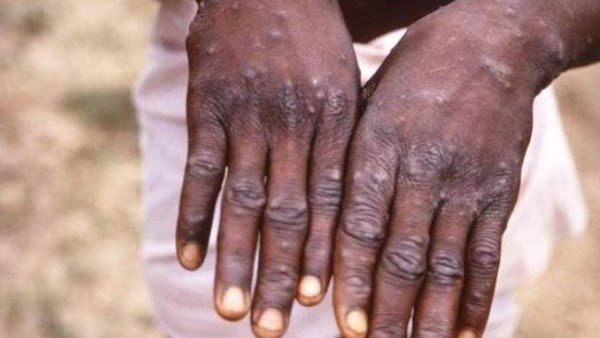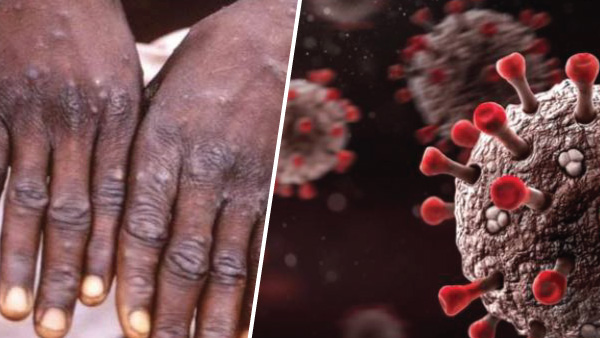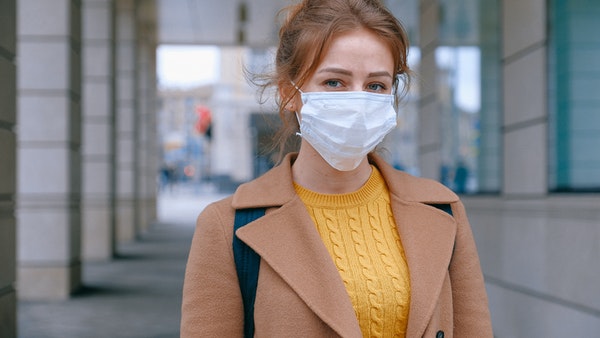
What Is Monkeypox?
Monkeypox is a zoonotic disease (transmitted from animals to humans) that has become the most common orthopoxvirus infection (genus of viruses that cause smallpox) in humans, with notably lower mortality rates. [3]
The virus is present in endemic areas like Western and Central Africa through circulation among a variety of mammals, with occasional events of transmission to humans. In humans, the virus is transmitted through animal bites or direct contact with an infected animal’s blood, bodily fluids, skin lesions and respiratory droplets. Some of these animals could be squirrels, mice, rats, monkeys and prairie dogs.
What Is Coronavirus?
Coronavirus disease 2019, also known as COVID-19, is a highly contagious infectious disease caused by the severe acute respiratory syndrome coronavirus 2 (SARS-CoV-2). The infection started a pandemic in the year 2019, which is ongoing to date.
COVID-19 has resulted in around 62.8 lakhs deaths worldwide as of 26 May, 2022, making it the most significant global health crisis since the 1918 influenza pandemic. Though COVID-19 has been effectively managed across the globe by vaccine development, medications and devices, its cases continue to rise with the arrival of more concerning COVID-19 variants like omicron and delta. [4]

Monkeypox Vs Coronavirus
1. According to WHO officials, human-to-human transmission of the monkeypox virus is extremely rare. If the transmission has occurred, it could probably be through close physical contact like skin-to-skin contact. This is the primary way in which monkeypox differs from COVID-19.
2. According to a study published in the journal National Library of Medicine, the coronavirus mainly spreads by respiratory droplets such as coughs or sneezes, up to a distance of six feet, and the virus also remains suspended in the air for up to three hours. [5] Later, many research papers revealed that the coronavirus can spread through much smaller particles called aerosols that can travel more than six feet.
3. Though monkeypox is also spread by respiratory droplets and fomites, it is not transmitted as fast as COVID-19 from one individual to another.
4. Coronavirus is a tiny, single-stranded RNA virus, giving it the ability to get transmitted long distances. The monkeypox virus, on the other hand, is a double-stranded DNA, meaning it is larger and heavier and cannot travel as far compared to COVID-19.
5. The fatality rate of monkeypox is below one per cent in the West African population and 11 per cent in the Central African population. On the other hand, the fatality rate of COVID-19 is five per cent for high-income countries and 2.8 per cent for low-income countries. [6]
READ RELATED: Melinda Griswold Height, Weight, Age, Body Statistics
6. The first case of the monkeypox virus was detected in the Democratic Republic of Congo in 1970. Since then, the virus has caused several small outbreaks, the majority of which has been limited to a few hundred cases in 11 African countries.
7. The highly infectious COVID-19 was discovered in Wuhan, China in December 2019 and has since spread to 212 countries and territories worldwide, infecting more than a billion people.
8. Similar to COVID-19, the monkeypox virus can also be transmitted from an infected mother to a child via the placenta or close contact after the delivery of the child. However, the infection rate in newborns is below two per cent, as per a study published in the journal The BMJ . [7] Studies on the infection rate of monkeypox from mother to child are limited. In severe cases, monkeypox can cause complications like stillbirth, preterm delivery or spontaneous abortion, however, some women with mild disease have also given birth to a full-term healthy child. [8]
9. According to current information by the WHO, monkeypox cases have been identified primarily, but not exclusively, among men who have sex with men undergoing treatment in primary care and sexual health clinics.

How Do The Symptoms Of Monkeypox Vary From COVID-19?
The key symptom of monkeypox is a painful rash that may start one to three days after developing a fever. It begins with flat red marks that gradually become raised and filled with pus over the next 5-7 days. The rash typically begins on the face and spread to other body parts like hands, feet and genitals.
Most of the symptoms of monkeypox are similar to those of smallpox, another infection spread by the same family of viruses. The other symptoms include fever, muscle pain, headache, swollen lymph nodes, chills and fever. The symptoms may start anywhere from 7-14 days, up to 21 days. The pus-filled rashes then crust over within two to four weeks, thus reducing the infection in the person’s body.
COVID-19 can spread both asymptomatically and pre-symptomatically, unlike monkeypox, which does not have any pre-symptomatic mode of transmission.
The key symptoms of COVID-19 are fever, cough, chill, runny nose, loss of smell and taste and sore throat. COVID-19 is also known to cause rash, but it is not as prevalent in patients as respiratory symptoms. [9] Rash linked to COVID-19 mainly appears as a complication, if the condition is not treated earlier.
To Conclude
Monkeypox is not as contagious and life-threatening as COVID-19. Also, coronavirus disease has largely been managed worldwide with the sudden invention of vaccines. As the monkeypox infection is similar to smallpox, its vaccine can help prevent monkeypox too, as per the CDC.
Source:










